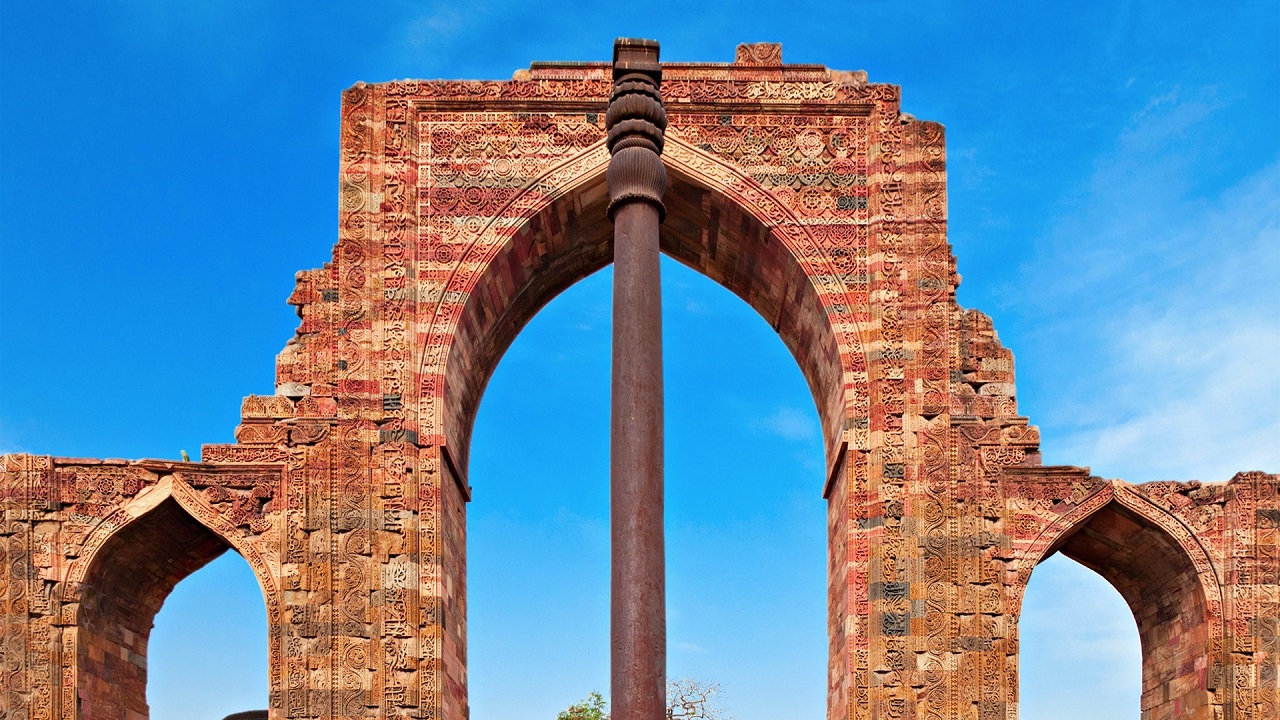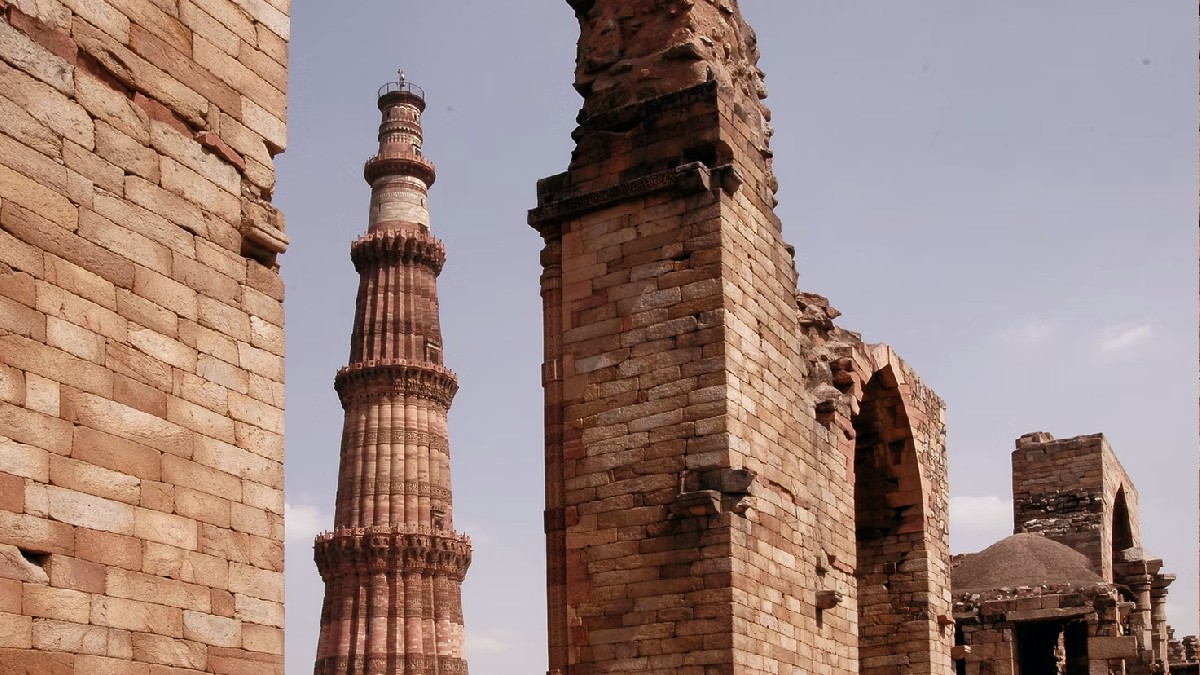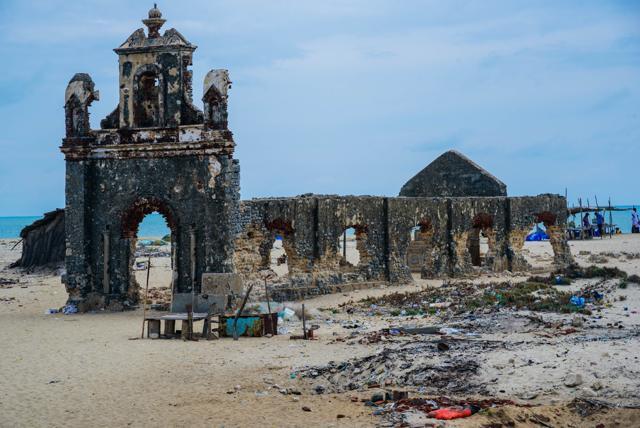The Iron Pillar of Delhi, located in the Qutub Complex in Delhi, India, is an ancient iron pillar that dates back to the 4th century AD. It was erected by Chandragupta II, a ruler of the Gupta Empire. It stands at a height of about 7.2 meters (23 feet) and weighs around 6 tons. The pillar bears inscriptions in Sanskrit, which praise the achievements of Chandragupta II.
Iron Pillar is known for its remarkable preservation, despite being exposed to the elements for over a millennium. The mystery surrounding the Iron Pillar lies in its composition and the fact that it has not corroded significantly over the years.

It is said to be installed in 13th century as a trophy in building the Quwwat-ul-Islam mosque and the Qutb complex by Sultan Iltutmish. Its original location, whether on the site itself or from elsewhere, is debated. One of the theory is that the relocation happened during the Muslim rule in Delhi. Some scholars have assumed that it happened around 1200 CE, when Qutb al-Din Aibak commenced the construction of the Qutb complex as a general of Muhammad of Ghor.
There are various stories and beliefs associated with the Iron Pillar of Delhi, including some that relate it to Lord Shiva. However, there is no concrete historical or archaeological evidence to support such claims.
One of the legends associated with the Iron Pillar of Delhi is that it was originally erected as a staff of Lord Shiva, who was pleased with the devotion of his devotees and turned the staff into iron. Another legend claims that the pillar was created by the mythical King Vikramaditya, who possessed the ability to transmute metal into gold.
However, these stories are largely based on religious beliefs and lack any historical or scientific evidence. The inscription on the Iron Pillar refers to the Gupta Emperor Chandragupta II and his achievements, and there is no mention of any religious significance or association with Lord Shiva.
While the pillar is located within the Qutb Complex, which includes the famous Qutub Minar and several other ancient structures, it does not have any explicit religious iconography or symbolism. The Qutb Complex as a whole has a significant historical and cultural importance, representing a blend of Hindu, Jain, and Islamic architectural styles due to the complex's transformation over the centuries.
It's worth noting that religious associations or legends often develop over time through cultural interpretations and beliefs. In the case of the Iron Pillar, certain legends and stories have emerged, linking it to Lord Shiva or other mythical figures. However, these claims are not based on concrete historical evidence and should be considered as part of the cultural and religious folklore surrounding the pillar.
Several theories have been proposed to explain the pillar's resistance to corrosion. One theory suggests that the pillar's iron was sourced from a region with naturally occurring phosphorus-rich iron ore, which contributed to its unique composition. Another theory proposes that the pillar's preservation is due to a combination of factors, including the absence of rainfall, a relatively dry climate, and the presence of a protective oxide layer.
One of the main reasons for the pillar's preservation is its composition. It is primarily made of wrought iron, with a high proportion of phosphorus impurities. The presence of phosphorus acts as a protective layer, forming a stable iron phosphate compound known as "misawite" on the surface of the pillar. This layer contributed to its unique composition, preventing further corrosion.
Despite its preservation, the Iron Pillar has not been completely immune to corrosion. It does show some signs of rusting in certain areas, particularly at the base. Nevertheless, its overall condition is a testament to the metallurgical expertise of ancient Indian craftsmen.
As the Iron Pillar of Delhi continues to be a subject of study and research, scholars and archaeologists focus on its historical and metallurgical aspects rather than religious interpretations. The primary emphasis is on understanding its composition, preservation, and the technological achievements of ancient Indian craftsmanship.
The Iron Pillar of Delhi continues to be a subject of scientific study and admiration, captivating historians, metallurgists, and visitors alike. Its endurance and resistance to corrosion remain a fascinating mystery that has yet to be fully unraveled.
Therefore, while the Iron Pillar of Delhi is undoubtedly a remarkable and mysterious historical artifact, its association with Lord Shiva is not supported by any factual evidence. It remains a subject of fascination and study for archaeologists, metallurgists, and historians, who continue to explore its origins and properties.



No comments:
Post a Comment